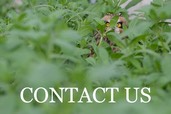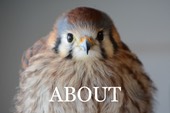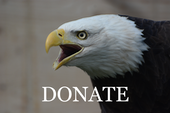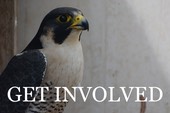The Week in Review
There were just six admissions this past week. Four birds suffered collisions, likely with vehicles: a Great Horned Owl, a Merlin, a Northern Flicker and a Northern Saw-whet Owl. Two were gunshot victims: a Northern Goshawk and a Red-tailed Hawk. All but the Great Horned Owl were euthanized due to the extent of their injuries. It was a pretty solemn week.
I have to admit, I was feeling pretty frustrated. It seemed like we had been seeing an increase in gunshot birds compared to previous years. Then I looked at our records. Remembering December isn’t over yet, it does appear that we are making progress, albeit slowly.

Why Perform Necropsies?
The short answer is because we always learn something. More importantly, what we learn helps us make better informed decisions when caring for injured wildlife. We strive to necropsy all patients that die or are euthanized due to their injuries. Samantha performs the necropsies. We learn an incredible amount because of her meticulous attention to detail.
A good example is Northern Goshawk 20-619. Goshawks are the largest of the three species of Accipiters found in our region. Accipiters have short broad wings and a long tail. They are very quick and maneuverable, making them well-adapted to hunting/chasing other birds. This hawk was found in a pasture north of Pasco. He had a droopy wing and could not fly.
The initial exam found a very swollen left elbow and bruising from the wrist to the shoulder. There was a wound on the underside of the wing just above the elbow. A radiograph showed the radius was fractured very close to the elbow, the ulna was dislocated at the elbow and the humerus was dislocated at the shoulder. We concluded that the hawk must have collided with something at a high rate of speed. The damage to the wing was not repairable and the hawk was humanely euthanized.

When Samantha performed a necropsy it became apparent that the hawk had been shot. Once the feathers were removed from the wing, a tiny entrance wound was visible in the skin. The projectile entered the wing about one inch from the wrist, traveled through the muscle parallel to the radius and exited the wing just before reaching the elbow. The force of the projectile fractured the radius, dislocated the ulna and dislocated the humerus.

Thank You to All who have made Year-end Donations!!!

Your gift will help BMW care for hundreds of native birds in 2021 like Great Horned Owl 20-617 who was struck by vehicle, fracturing his left clavicle and dislocating his left coracoid. Costs for his care include the initial exam, blood work, x-rays, medication and food (rats and mice yum yum!). He will be in a hospital cage limiting his activity for up to a month, then a small mew for a week or two before moving to a flight pen for conditioning for release. If all goes well he will be ready for release three months after admission. Of course, while the owl is under care he needs someone (staff) available to administer medications, feed him, provide physical therapy and clean his cage. Your donation helps with these expenses and more. Thank you again.
If you would like to help BMW care for native wildlife in 2021 please click HERE
Thank You!!!







